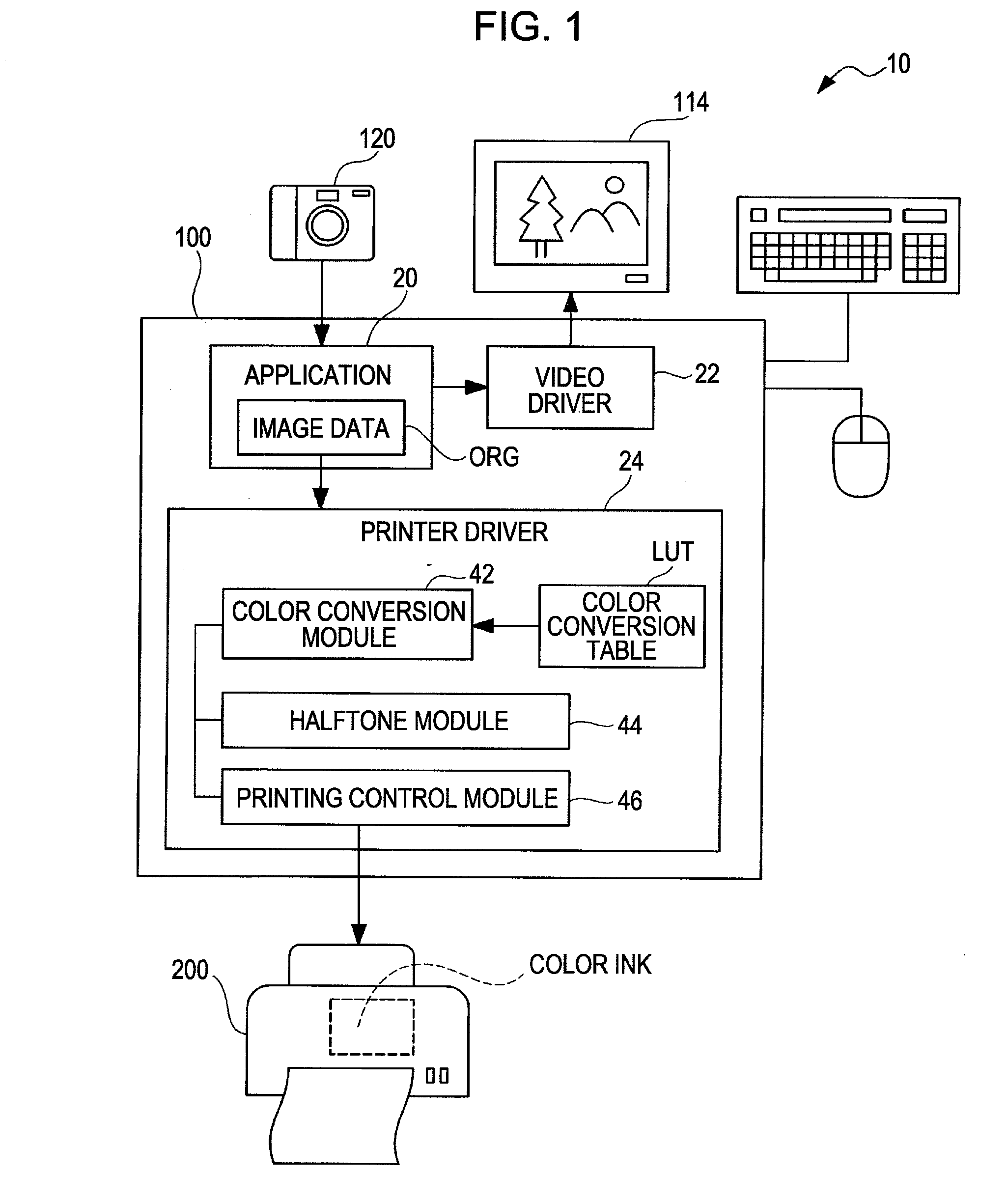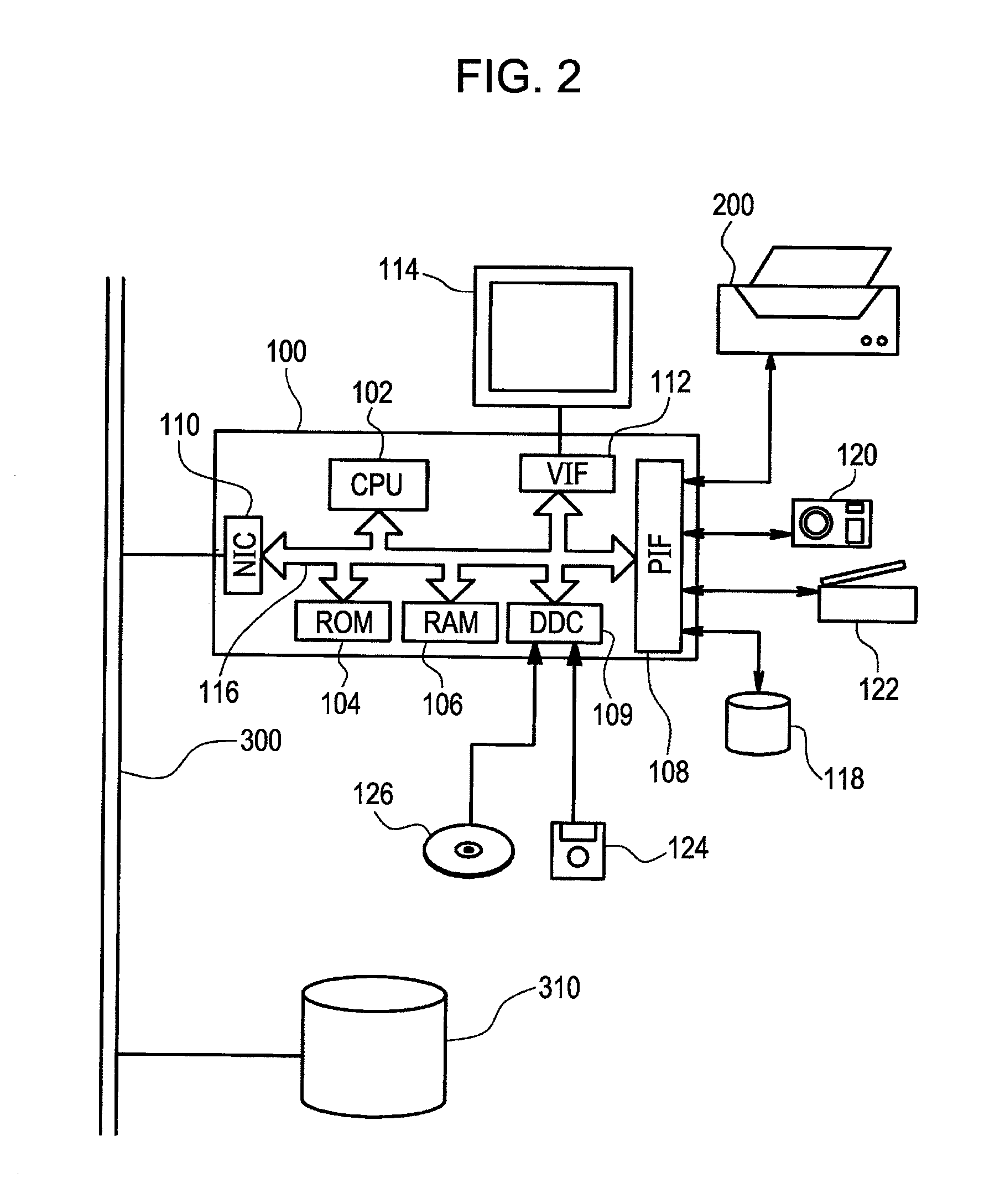Printing apparatus
- Summary
- Abstract
- Description
- Claims
- Application Information
AI Technical Summary
Benefits of technology
Problems solved by technology
Method used
Image
Examples
modified example 1
E-1. MODIFIED EXAMPLE 1
[0063]In the embodiment, a metallic ink layer MR and a color ink layer CR are formed on an opaque printing medium P1 in this order, and metallic color printing is performed. However, the order of forming the ink layers may be reversed. For example, as shown in FIG. 7B, in a case where printing is performed on a transparent printing medium P2, the color ink layer CR and the metallic ink layer MR may be formed on the printing medium P2 in this order. As a result, when a printed material is observed in the direction from printing medium P2 to the metallic ink layer MR, the metallic color of the printed material can be observed.
[0064]In this case, since the order of forming the metallic ink layer MR and the color ink layer CR may be reversed with respect to the order of the example, the metallic ink S may be designed to be ejected from the nozzle column that is disposed at the rear end portion in the scan direction in which the ink ejecting is performed among the ...
modified example 2
E-2. MODIFIED EXAMPLE 2
[0065]In the embodiment and Modified Example 1, the one-directional printing is exemplified as the metallic color printing. However, the printer 200 may be configured for bi-directional printing. More specifically, for example, the ink change from light inks corresponding to the nozzle columns 256 and 257 that are disposed at the two end portions in the alignment direction of the nozzle columns of the print head 250 to the metallic inks S may be performed.
[0066]In this case, since the bi-directional printing is performed, the Step 430 shown in FIG. 5 can be replaced with, for example, a process shown in FIG. 8. More specifically, after a halftone process, the computer 100 determines whether or not a raster of a to-be-printed object includes a metallic area (Step S431). As the result of determination, if the metallic area is not included (Step S431: NO), only the nozzle columns 252 to 255 ejecting the color inks among the nozzle columns 252 to 257 provided to t...
modified example 3
E-3. MODIFIED EXAMPLE 3
[0072]FIG. 10 shows details of a print head 250b according to Modified Example 3. The print head 250b is different from the print head 250 shown in FIG. 6A in terms of the alignment of nozzle columns. More specifically, the example is different from the embodiment in that the nozzle column 257b and 255b corresponding to the specific color inks are disposed between the nozzle column 256b disposed at the front end portion in the scan direction of the print head and the nozzle columns 252b to 255b corresponding to the three primary colors.
[0073]In a case where the same metallic color printing as that of the embodiment is performed by using the print head 250b, if the to-be-printed image of the metallic area is to be formed with no use of the light magenta ink Lm and / or the black ink K or with almost no use thereof, and if the printing is performed by performing the conversion process in the Step S420, a time interval from the time when the metallic ink S is lande...
PUM
 Login to View More
Login to View More Abstract
Description
Claims
Application Information
 Login to View More
Login to View More - R&D
- Intellectual Property
- Life Sciences
- Materials
- Tech Scout
- Unparalleled Data Quality
- Higher Quality Content
- 60% Fewer Hallucinations
Browse by: Latest US Patents, China's latest patents, Technical Efficacy Thesaurus, Application Domain, Technology Topic, Popular Technical Reports.
© 2025 PatSnap. All rights reserved.Legal|Privacy policy|Modern Slavery Act Transparency Statement|Sitemap|About US| Contact US: help@patsnap.com



